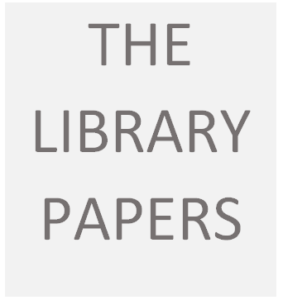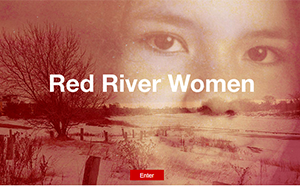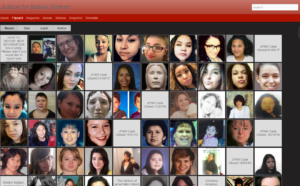What is the purpose of storytelling?
Journal Entry 2
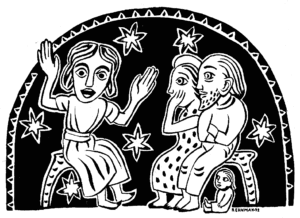 The discussion of storytelling in this module focused on stories written for children and books written about children’s stories, and not so much on children telling their own stories. But this is what interests me about storytelling: people including children telling their own stories. In Picturing Canada: A history of canadian children’s illustrated books and publishing, Edwards and Saltman do note that Canadian publishing houses Annick Press and Kids Can Press both originally intended to publish writing by children, but found it was unfeasible, leaving children authors with no real platform. I think that has changed with the advent of digital media.
The discussion of storytelling in this module focused on stories written for children and books written about children’s stories, and not so much on children telling their own stories. But this is what interests me about storytelling: people including children telling their own stories. In Picturing Canada: A history of canadian children’s illustrated books and publishing, Edwards and Saltman do note that Canadian publishing houses Annick Press and Kids Can Press both originally intended to publish writing by children, but found it was unfeasible, leaving children authors with no real platform. I think that has changed with the advent of digital media.
For most of human history, storytelling meant a spoken performance in front of a live audience. People used stories to learn about the world around them including the natural and social aspects, to explain their experience of it to others, and to describe things the way they would like them to be. Stories taught and still teach people the values and morals of their cultures, how to understand the motives of other people, and how to create new visions of the world (Gottschall, 2012). The performances could be spoken or chanted, accompanied by music or singing, supported by gestures and even props such as live actors or puppets. Although there was a role for ‘official’ storytellers in most cultures, and even training traditions to initiate new members, in practice anyone who could hold an audience could tell stories.
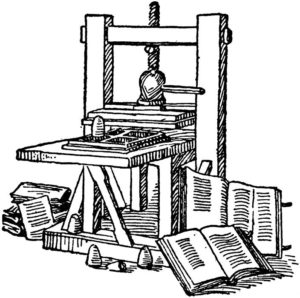 But the printing press meant an increasing focus on written language. Traces of the oral tradition survived in pockets, in the traditional folk songs and tales of the European bards, among First Nations in North America, and among Australian aboriginals. Traces of performance also survived in plays and musical concerts, although these modes were not as widely available as printed books. Traces of the visual tradition survived in illustrated books. But by and large, storytelling came to be seen as primarily the domain of written language and the illustrations or performances were subordinate to the printed words.
But the printing press meant an increasing focus on written language. Traces of the oral tradition survived in pockets, in the traditional folk songs and tales of the European bards, among First Nations in North America, and among Australian aboriginals. Traces of performance also survived in plays and musical concerts, although these modes were not as widely available as printed books. Traces of the visual tradition survived in illustrated books. But by and large, storytelling came to be seen as primarily the domain of written language and the illustrations or performances were subordinate to the printed words.
The new mode of storytelling called for a new group of official storytellers, and also for teachers who could initiate newcomers into the use of this technology. But it is fair to say that for most people, not just anyone could be a storyteller any more. Story-telling became more formal, and for most people, using this technology meant consuming rather than producing: reading rather than writing.

In the age of radio and television and offset printing, the performance and visual aspects of stories became important again, making the stories more accessible and less formal, even though most of the storytelling was still quite formal and ‘official.’ The focus for most people continued to be on consuming rather than producing content: still the audience, not the performer.
Today stories still serve the same purposes they always did. But now with digital media and the internet, the possibilities of inventing, combining and reconfiguring storytelling are almost limitless. The stories have changed because different media open new ways of telling them, allowing new ideas to be expressed, and new storytellers to express them. The role of the audience has changed–no longer are they only passive consumers of one-way communication. Now, as in the days of live performance, audiences can respond almost immediately. As a result the storyteller has changed as well: once again anyone who can hold an audience can tell a story. Now it could be you who tells the story, or you who takes it up where the ‘official’ storyteller left off.
 And of course there is still a need for teachers, who once again will help students learn the new technologies, but now this technology includes producing as well as consuming. It includes formal and informal modes. Just as it affords new ways of telling stories, it requires new ways of teaching.
And of course there is still a need for teachers, who once again will help students learn the new technologies, but now this technology includes producing as well as consuming. It includes formal and informal modes. Just as it affords new ways of telling stories, it requires new ways of teaching.
In the material below, I have identified different ways that stories are now created and used, intended to serve as inspiration and examples for student authors. The first group of material represents linked ideas on First Nations issues, the second, material for younger children. Taken together, these examples represent only part of the variety of forms, audiences, and purposes for storytelling available to us all now.
Works Cited
Gottschall, Jonathan. The Storytelling Animal How Stories Make Us Human. Boston, Mariner Books, 2013.
Animated Folktales
[expand title=”Read More” swaptitle=”Read Less” notitle=”true”]
First Nations people, for whom oral traditions have maintained their cultural value, can share their traditions and tell their stories to a wider audience:
Raven Tales is a series of half-hour animated television programs, intended to introduce Aboriginal folklore in a humorous and entertaining way.
They tell the stories of the many adventures of Raven, the most powerful deity of Aboriginal mythology. Each episode features an original interpretation of a popular tale from the folklore of our first peoples.[/expand]
Multi-media Stories
[expand title=”Read More” swaptitle=”Read Less” notitle=”true”]
It is not only traditional stories that are being told via digital media—issues which have long gone unaddressed are now being raised and reaching an international audience.
Produced by the BBC in April 2015, this multi-media story investigates the question “Why have so many of Winnipeg’s Aboriginal women and girls been killed?” It is told using print and images, both still and video, and features a mix of interviews with people connected to the story, and data from police and government records.[/expand]
Personal Blogs
[expand title=”Read More” swaptitle=”Read Less” notitle=”true”]
If you have a cause or a concern that you want to tell people about, it is now possible to do so via your own personal blog. There are lots of sites which let people set up free websites, and even provide technical support.
And there are tools available to help bloggers connect to audiences, and again instructions are available for how to do it.
This has given thousands, if not hundreds of thousands of people a voice and influence never before possible. It has meant that those with a story to tell can make their stories ‘sticky’: they don’t just get told once and then vanish. They can endure and grow online.[/expand]
Official Websites
[expand title=”Read More” swaptitle=”Read Less” notitle=”true”]
Of course authors and publishers of traditional print books can also extend their influence and increase their audiences through digital media.
Official websites usually offer more informal, interactive contact with the storytellers, which is a benefit to them and to their audiences.[/expand]
Fanfiction Wikis
[expand title=”Read More” swaptitle=”Read Less” notitle=”true”]
Imitation may be the sincerest form of flattery, although not all creators feel equally flattered when their fans imitate them. Imitation is also one of the best ways to learn a craft—in other fields it is known as ‘apprenticeship.’
Fanfiction sites give novice authors a model to follow, a forum to publish in, and even feedback from the audience. These sites, like gaming sites and other forums, allow people to find a community in tune with their own interests, and the feedback and the expertise acquired is genuine.[/expand]
Fanfiction Read-Aloud?
[expand title=”Read More” swaptitle=”Read Less” notitle=”true”]
From reading aloud to a ‘live’ audience it is a natural step to reading aloud on video and then uploading the result to YouTube or Vimeo or other sites that enable streaming video.
From this simple read-aloud format, it is not a big step to also illustrate or animate your reading, as this fanfiction animation of Dr. Suess’s ‘O The Places You’ll Go’ shows.[/expand]
